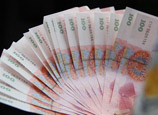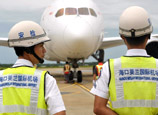
The Temple of Confucius has over 100 buildings which contain over 460 rooms in total, and the total area of the ancient architectural complex is about 16,000 square meters. The key buildings include the stone-tablet pavilions of the Jin and Yuan dynasties, the Library of the Confucian Family, Apricot Pavilion, Deyang Tiandi Pavilion of the Ming Dynasty, and the Hall of Great Achievements and Resting Hall re-constructed in the Qing Dynasty. The design of the Gold-Tablet Pavilion inherited many architectural traditions from the Song Dynasty. The arches are thinly scattered, with the length decreasing from oval arches to Ling arches to regular arches. The arches in different areas have similar appearances. The design of the Temple’s main hall is a rare example of the regular architectural designs of the Song and Jin dynasties. Buildings including the Hall of Great Achievements, the Resting Hall, Library of the Confucian Family, Apricot Pavilion, and Dacheng Gate are mixed structures of stone and wood. The layout and details of the arches are very delicate and the number of arches varies in different areas. The distance between every two arches and the length of these arches vary as well. In order to remedy the sense of vacancy, even the regular arms, long arms and oval arms have been lengthened. These are the unique features of the architecture in the Temple of Confucius.
The Temple of Confucius has a collection of 1,044 tablets from various dynasties including the records of emperors granting titles to Confucius after his death, the records of emperors repairing the temple, and the poems, articles and inscriptions written by ancient emperors, officials and scholars. The languages of these tablets include Chinese, Mongolian, the Phags-pa script, and the Manchu language. In addition, the styles of calligraphy include regular script, cursive script, official script and seal script. The tablets are precious historic materials for studying the politics, economy, culture and art of feudal society. The tablets include over 20 inscribed in the Han Dynasty, and the Temple of Confucius is also the place with the largest collection of tablets from the Han Dynasty. The Yi Ying Tablet, Li Qi Tablet, Kong Qi Tablet and Shi Chen Tablet are masterpieces of the Han Dynasty’s official script, and the Zhang Menglong Tablet and Jia Shijun Tablet are masterpieces of the Wei style of calligraphy. The temple also has the calligraphy works of great artistic merits written by Sun Shifan, Mi Fu, Dang Huaiying, Zhao Meng, Zhang Qiyan, Li Dongyang, Dong Qichang and Weng Fanggang, the inscriptions written by Yuan Haowen and Guo Zijing, and the “Yu Hong Tower” calligraphy works written by Kong Jisu and later inscribed on 584 tablets. The tablets of the Temple of Confucius are priceless treasures of China’s ancient calligraphy.
The famous stone artworks in the Temple of Confucius include the stone reliefs from the Han Dynasty, the carved stone columns from the Ming and Qing dynasties, and the Pictorial Biography of Confucius carved in the Ming Dynasty. Among them, there are more than 90 stone reliefs from the Han Dynasty that contain rich and extensive themes, including both the records of people's social lives and the historical stories and tales of legends. There is a variety of carving techniques, including the relief and carving of painted lines. The reliefs were carved deeply or shallowly and have smooth or rough surfaces. Some have strict and refined styles and some have rough and bold styles. In addition to natural and smooth lines, the design of the sculptures is also graceful and beautiful. There are a total of 74 carved stone columns from Ming and Qing dynasties including 56 carved using the painted line carving technique and 18 high reliefs. The patterns on the 56 stone sculptures are mostly small pictures of clouds and dragons, phoenixes, and peonies that were carved in the seventh year of the reign of Emperor Yongzheng during the Qing Dynasty. The peonies, pomegranates, lotuses and other flowers were carved on the Shrine of the Great Wise Men, which honored the ancestors of Confucius. It has a perfect composition, and dates from the 17th year of reign of Emperor Hongzhi in the Ming Dynasty. The finest stone sculptures are the columns embossed with the design of dragons. The 10 columns in front of the Dacheng Hall are very tall, with each being six meters high. The two columns of the Shrine of the Great Wise Men have high artistic value, with the dragons looking vigorous and vivid and the clouds looking lively. In addition, the stone steps carved in low relief in front of the Shengshi Gate, Dacheng Gate and Dacheng Hall also have very high artistic value. The Pictorial Biography of Confucius was finished in the 20th year of the reign of Emperor Wanli in the Ming Dynasty. It was collated by Mao Fengji, a student of the Confucius Institute in Qufu, illustrated by Yang Zhi, an artist from Yangzhou, and carved on the stone by stonecutters from Suzhou in cursive script. There are a total of 120 pictures, vividly describing Confucius' life. It is one of the oldest picture-and-story books in China and has very high historical and artistic value. In 2,000 years, the Temple of Confucius has been destroyed and rebuilt many times but never abandoned. With the government's protection, it was developed from Confucius’s house into a large architectural complex which can match imperial palaces. The long history and abundant historical records concerning the architectural complex are incomparable in the entire world.


















 Teenage crash victims were talented students
Teenage crash victims were talented students


![]()
